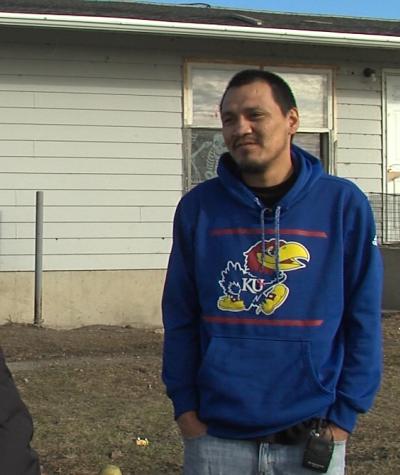Right before (and on) Election Day, my colleagues and I spent an unexpected couple of weeks driving across the North Dakota landscape from Standing Rock on the southern border of the state to Spirit Lake to Turtle Mountain on the northern border of the state. While it was beautiful and interesting, we weren’t there on a mini-vacation. We were there because on October 9, the Supreme Court allowed an untested voter ID law that required voters to have photo IDs with current residential addresses on them to go into effect.
My photo ID has my current residential address on it and yours probably does too. That is, if you don’t live on a North Dakota reservation. We had heard about the issues surrounding residential addresses on North Dakota reservations before we arrived but those issues were largely academic and foreign to me until I spent time there.
Nearly everyone I met on the reservations used their P.O. Box address for everything: their utility bills for their homes, their bank statements, and all their ordinary mail. And until the past few weeks, their state and tribal IDs. Driving around the reservations, it was easy to understand why. I found myself standing on a street labeled one thing on my phone’s Google maps GPS, another on Bing, another on my client’s North Dakota issued ID, another on the state’s official GPS system, and yet another on a street sign nearby. By the end of this trip, this experience seemed commonplace (except the street signs, they were not commonplace).
But the experience that has stayed with me most is not the Kafka-esque feeling of trying to explain why a residential address requirement for voting makes little sense in a place lacking residential addresses.
It is my first conversation with my client Dion Jackson (pictured above). I met Dion Jackson because he had turned in an absentee ballot application with the address on his ID and it was rejected because his address was “invalid.” I sat down at Dion’s kitchen table while he held his baby and he showed me his letter. He had never voted before but felt inspired to participate in this election after attending a political event on the Spirit Lake Reservation. But after receiving this letter, he told me with a resigned shrug that he assumed he couldn’t vote and that was the end of the story. What could he do? He said this is just what happens around here and he wasn’t terribly surprised.
I was heartbroken to see upfront the impact of voter suppression in action. Schemes that seek to suppress the vote prey on communities that have been historically disenfranchised, disempowered, and denied resources to advocate for themselves. But what happened next is just as important. Given his options, Dion signed on to the lawsuit and spoke out.
The next morning, a news van was in front of his house and his message was clear: I’m not afraid to use my voice. You can hear him for yourself here. And Native Americans across North Dakota refused to be shut out. The tribes issued thousands of IDs, mobilized hundreds of volunteers, and turned out in high numbers.
We didn’t succeed in staying the law entirely for this past Election Day but we did get a court order allowing Dion and his fellow Plaintiffs to vote. But most importantly, we did our job: We were advocates that were able to empower and lift up the voices of people like Dion. And before we are done, I think there will be a lot more Native voices to hear from.

